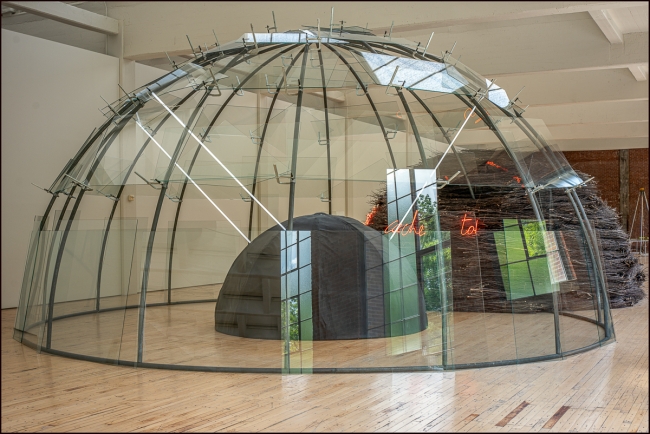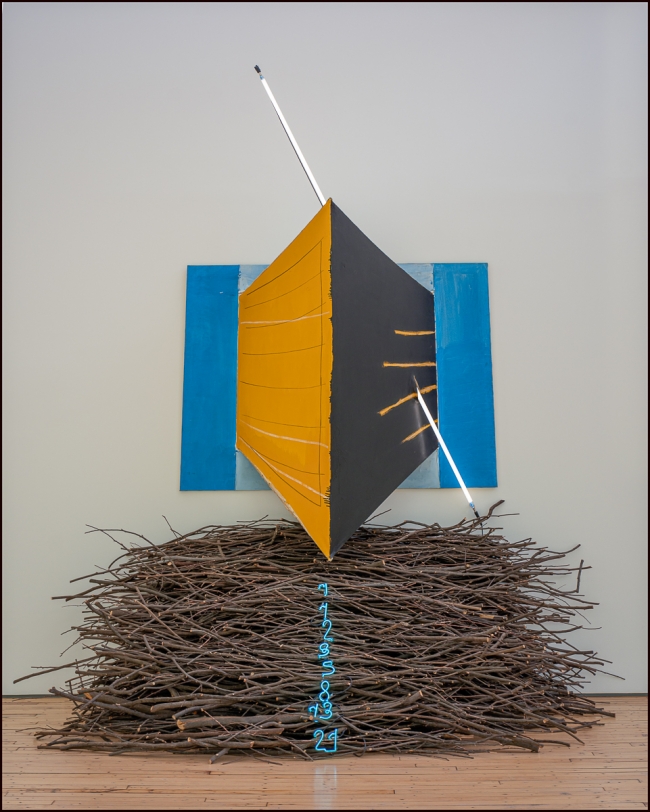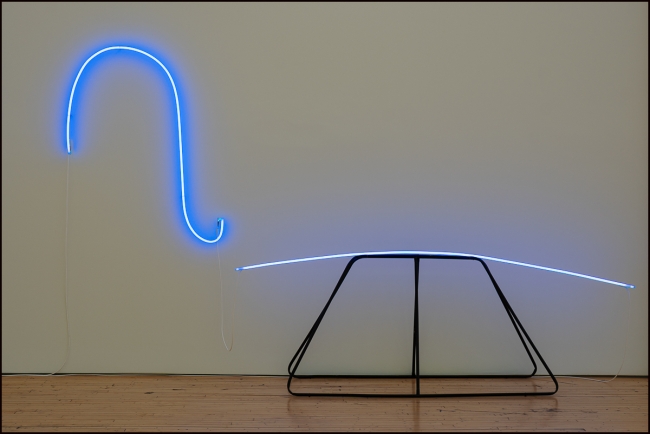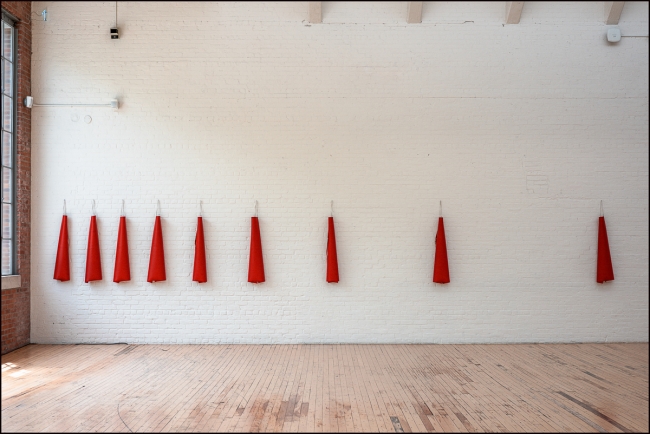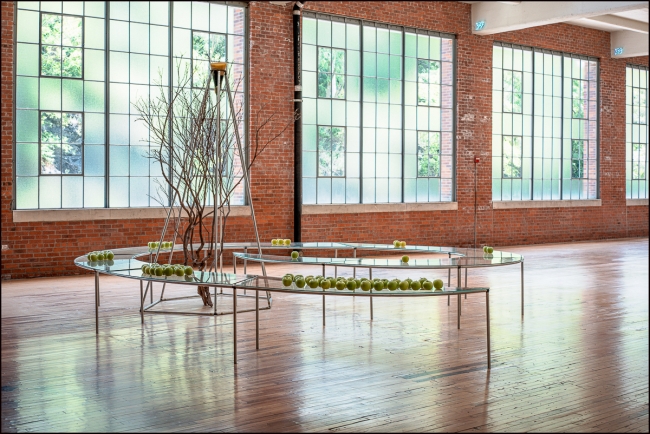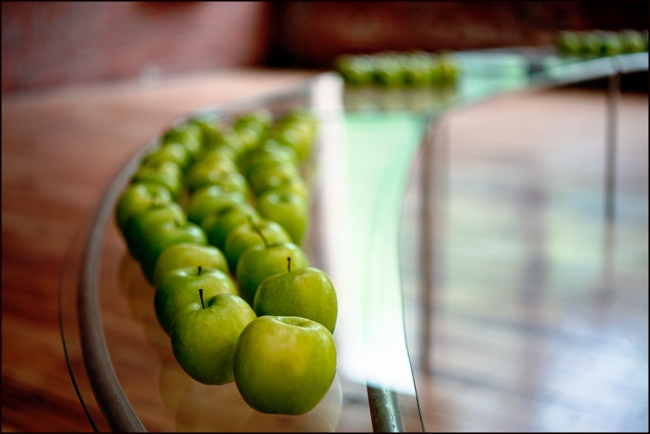Another artist I liked was Mario Merz who The Guggenheim describes as follows:
Mario Merz was born in Milan. He grew up in Turin and attended medical school for two years at the Università degli Studi di Torino. During World War II he joined the anti-Fascist group Giustizia e Libertà and was arrested in 1945 and confined to jail, where he drew incessantly on whatever material he could find. In 1950 he began to paint with oil on canvas. His first solo exhibition, held at Galleria La Bussola, Turin, in 1954, included paintings whose organic imagery Merz considered representative of ecological systems. By 1966 he began to pierce canvases and objects, such as bottles, umbrellas, and raincoats with neon tubes, altering the materials by symbolically infusing them with energy.
In 1967 he embarked on an association with several artists, including Giovanni Anselmo, Alighiero Boetti, Luciano Fabro, Jannis Kounellis, Giulio Paolini, Giuseppe Penone, Michelangelo Pistoletto, and Gilberto Zorio, which became a loosely defined art movement labeled Arte Povera by critic and curator Germano Celant. This movement was marked by an antielitist aesthetic, incorporating materials drawn from everyday life and the organic world in protest of the dehumanizing nature of industrialization and consumer capitalism.
In 1968 Merz adopted one of his signature motifs, the igloo. It was constructed with a metal skeleton and covered with fragments of clay, wax, mud, glass, burlap, bundles of branches, and often political or literary phrases in neon tubing. He participated in significant international exhibitions of Conceptual, Process, and Minimalist Art, such as Arte povera + azioni povera at the Arsenali dell’Antica Repubblica, Amalfi, and Live in Your Head: When Attitudes Become Form at the Kunsthalle Bern in 1968; the latter exhibition traveled to Krefeld, Germany, and to London. In 1970 Merz began to utilize the Fibonacci formula of mathematical progression within his works, transmitting the concept visually through the use of the numerals and the figure of a spiral. By the time of his first solo museum exhibition in the United States, at the Walker Art Center, Minneapolis, in 1972, Merz had also added stacked newspapers, archetypal animals, and motorcycles to his iconography, to be joined later by the table, symbolizing a locus of the human need for fulfillment and interaction. Merz often responds to the specific environment of his exhibitions by incorporating materials indigenous to the area as well as adjusting the scale of the work to the site. His first solo European museum exhibition took place at the Kunsthalle Basel in 1975, and a major retrospective was organized by the Solomon R. Guggenheim Museum, New York, in 1989. Merz was married to artist Marisa Merz. He died at his home in Milan on November 9, 2003.
For more information see here on the Dia Beacon website.
I’m not entirely sure why I like his work. Maybe its because it’s full of light and energy. I also like the way he mixes organic forms (e.g. piles of sticks, apples etc.) with artificial.
Taken with a Sony A7IV and Samyang 45mm f1.8

